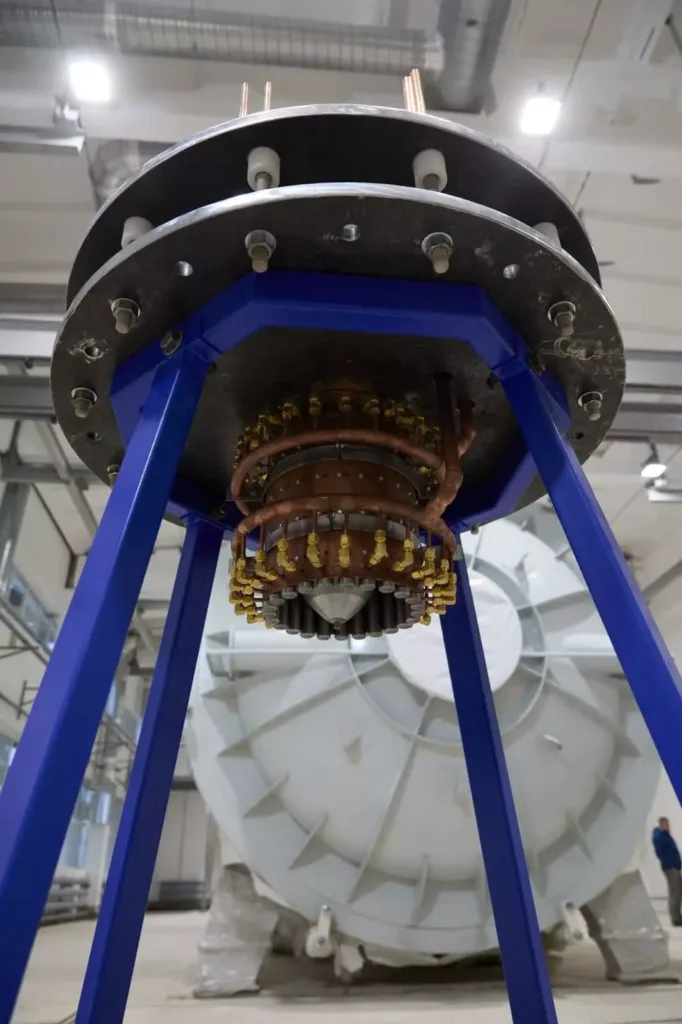The Article Tells The Story of:
- Russian scientists develop a plasma engine prototype that could reduce Mars travel time to 30-60 days.
- The engine uses a magnetic plasma accelerator to achieve unprecedented speeds and efficiency.
- While promising, the technology is still in the prototype stage and faces significant development challenges.
Russian scientists have made a groundbreaking advancement in space travel technology. They have developed a laboratory prototype of a plasma electric rocket engine that could drastically reduce interplanetary travel time. This new engine, based on a magnetic plasma accelerator, promises to enable trips to Mars in just 30 to 60 days, a significant improvement over the current year-long journey.
How the Plasma Engine Works

The plasma engine, developed by Russia’s State Atomic Energy Corporation, Rosatom, operates on a fundamentally different principle than traditional chemical rocket engines. It uses a magnetic plasma accelerator to generate thrust.
The engine consists of two electrodes. When charged particles move between these electrodes and a high voltage is applied, an electric current creates a magnetic field. This field propels the particles out of the engine, producing thrust. The engine achieves a power output of about 300 kW, allowing it to accelerate charged particles to speeds of up to 100 km/s (62 miles/s).
This technology far surpasses traditional chemical engines, which have a maximum matter flow velocity of about 4.5 km/s. The plasma engine’s efficiency is another key advantage. It does not require intense heating, which reduces temperature overloads on engine components. Additionally, it converts nearly all the electrical energy it generates into motion.
Testing and Future Applications
Engineers will test the plasma engine using a large-scale experimental stand in Troitsk. The stand includes a vacuum chamber measuring four meters in diameter and 14 meters in length. This setup allows scientists to simulate the conditions of deep space.
The initial launch of spacecraft into orbit will still rely on traditional chemical rockets. However, once in orbit, the plasma engine can take over. Future applications could include space tugs for transporting cargo between planets.
Challenges and Limitations
Despite its potential, the plasma engine is still in the prototype stage. Significant development work is needed before it can be used in crewed space missions. Rosatom has conducted over 2,400 hours of testing, but the engine has not yet been tested in space-like conditions for long durations.
The idea of using space tugs for interplanetary cargo transport is also speculative at this stage. While the technology shows promise, it is important to view the dramatic reduction in travel time as a long-term goal rather than an immediate reality.
Check Out Latest Article Of Trump’s Bold Push for a Historic Mars by 2029: Can NASA Meet the Deadline? Published on February 4, 2025 SquaredTech
Broader Implications for Space Exploration
The development of the plasma engine is part of Rosatom’s broader initiative to advance space exploration technologies. The company is also working on new nuclear power plants for space applications, onboard systems, and automatic control and navigation systems for spacecraft.
This breakthrough could revolutionize space travel, making interplanetary missions faster and safer. It also opens up new possibilities for exploring distant planets and transporting cargo across the solar system.
Stay Updated: Space


